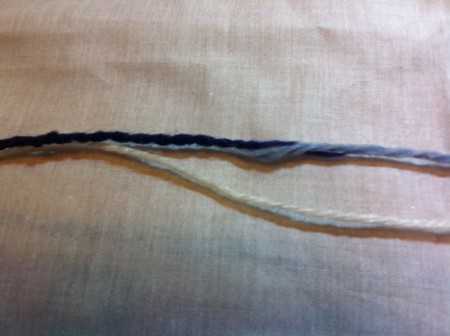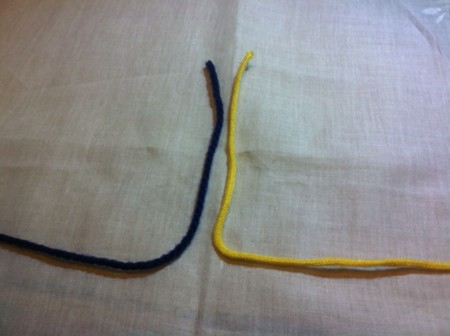Hello from Japan! This is Kimono Flea Market ICHIROYA's News Letter No.453.
Today we like to talk about Miyako Jofu, a supreme woven fabric made of choma(ramie) from Miyakojima Island in Okinawa.
These are the examples of Miyako Jofu kimono:
http://www.ichiroya.com/item/list2/195973/
http://www.ichiroya.com/item/list2/217393/
http://www.ichiroya.com/item/list2/194299/
As you can see, they are quite chic with indigo colors and the patterns so fine. Just as other woven fabrics as Oshima or Kurume, Miyako Jofu are dyed first as thread and then woven(sakizome type).
We went to the lecture by Takeshi Sunagawa, the craftsman of Miyako Jofu . As the other kimono industry, it is the combined efforts of work to produce one kimono, each procedure is specialized and divided. Sunagawa san(both Takeshi san and his son Kazuto san) are in charge of the last procedure called Kinuta uchi.
Kinuta uchi is to hammer the woven fabric by a wooden mallet(about 20,000 times) to produce the unique gloss and transparency of the fabric.
Choma originlly has not have the gloss but by hammering, the fabric becomes like a silk, so soft and have charming gloss.
The procedure to make one Miyako Jofu kimono fabric, it is astounding time and work.
1)produce threads from choma
2)apply the design by tieng the part to prevent from being dyed
3)dye
4)weave
5)hammer
The caulome of Choma(it is called Boo in Miyakojima Island)is split up into very thin strip). They are only around 50 cm long(approx 20 inches).To remove the outside skin, it is so interesting that they use Mimigai(a kind of abalone)shell. Teruko san, wife of Takeshi san showed us how to split up using her fingernails. She kept splitting up the caulome wetting her fingers with water.
We really wanted to know one point. The length of the `thread` from Choma is only around 20 inches. We were always wondering why Miyako Jofu does not have burl or tied knots. There should be the `bumps' --we used scope to check but could not find, so that was the thing we wanted to ask the craftsman. The reason was, they do not make knots, but adding another strip one by one by twisting and joining in a certain way, the threads becomes like one serial thread.
We hope you can see the idea by the yarn we are showing here.This is very simplified but the shorter thread (fork part, dark blue yarn in this case) shoud be thinner, and then new thread(light blue) is joined and the part becomes three thread combined together, but the part should be thin as other part, then new thread is joined at the shorter thread at fork part- this procedure continues - and each thread is like a piece of hair! Women over 80 years usually do this part, and they know hot wo make the joined part even.
So to make warp, two threads are twisted and the joined part becomes three threads without no bumps. Weft starts with one thread, joined another thread and then the part is twisted to the direction the read came- and this part also becomes even without bumps.
The work just needs so much patience!
(warp)



(weft)



Afterwards the threads are twisted by looms to have more strength. This is still the very beginning- the threads are tied, dyed and woven-each procedure needs the craftsman's skill from experience. It takes more than three months to complete one bolt, and we could understand only by seeing a part of procedure.
Here is the You Tuebe video of the procedure.
It used to be, they produced more than 15000 bolts a year in around 70 years ago but now only 30 bolts are produced. It used to be when girls were born, the family rejoiced-they can become weavers, people said if you have two girls in a family, you can build a big house. Because of the change of lifestyle, it is not that way any more at all as you can imagine. The subtle texture, probably cannot be produced by machines but the accumulation of experience and knowledge are keeping this particular fabric. It is easy to say the technique should not die out, but so much patience is needed! I heard( I am not sure it is true or not) even older people who are expected to do the threads procedure, rather go out for sports and do other activities. Can we blame them? No we could not think so after seeing the unbelievable work.
*************************************************************************************
Thank you very much for reading our newsletter. We are adding charming new arrivals, we hope you enjoy checking our new arrivals!
domo argato gozaimasu
with many kansha,
Ichiro & Yuka Wada
Kimono Flea Market ICHIROYA
http://www.ichiroya.com
e-mail: info@ichiroya.com
address: Asia-shoji Bldg.301
1841-1 Nishi 1 chome
Wakamatsu cho
Tondabayashi city
Osaka 584-0025 JAPAN
TEL&FAX ( international number ) -